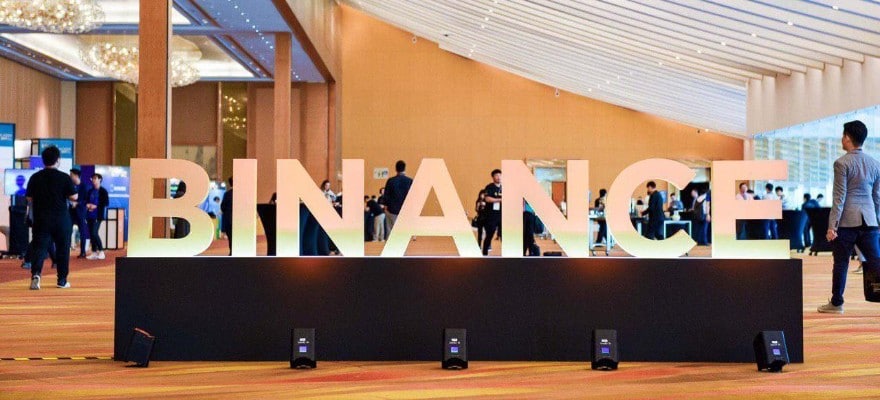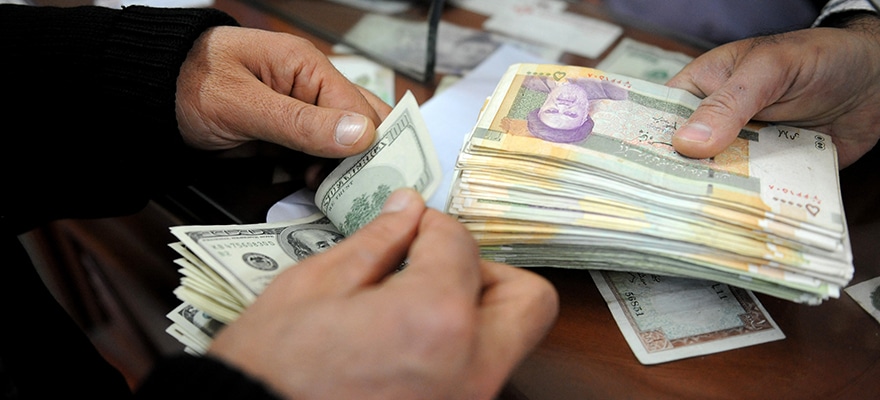The first quarter of 2020 has been a reality check for those with pipe dreams about virtual currencies performing as safe-haven assets. The volatile history of the digital asset market, exacerbated by the global pandemic induced recession, has demonstrated that unpegged Cryptocurrencies are far from the panacea to our current financial woes. However, in the midst of all the tumult, stablecoins have emerged as viable shelters from the volatility of the crypto and convenient payment instruments that can accumulate value.
The key difference between stablecoins and other cryptos is that they are backed by real-world assets, be it fiat money — such as the U.S. dollar or euro — or commodities like gold or oil. As their name implies, stablecoins are able to provide the crypto community with the stability they get from the traditional monetary system and combine it with the advantages that stem from advanced Blockchain technology. Given the current circumstances, crypto enthusiasts have been exploring the potential of crypto-collateralized stablecoins becoming a common use case and deriving the value of other cryptocurrencies used as collateral.
Stablecoin market share growing in time of uncertainty
The extreme volatility of the crypto market, caused by coronavirus-related FUD (fear, uncertainty, and doubt), has led to panic asset liquidation and many investors seeking out safer means of protecting their funds. As a result, the trading volume of stablecoins, which has managed to remain solid despite most other cryptocurrencies going down, hit its all-time high of $90 million amidst the market crisis. That measures up to an 8% increase compared to the end of 2019. Stablecoins also saw more than a 30% growth in market capitalization during that period, as their creators expanded the supply of assets-backed currencies in order to meet the needs of crypto traders and investors willing to shield their digital savings.
The remarkable stablecoin boom can be additionally explained by the diversity of this asset class which has made decentralized financial instruments more accessible and given users more of a chance to gain long-term benefits. For example, Ethereum stablecoins, which constitute roughly half of all stablecoins in existence and have a total value of over $7.3 billion — a dramatic 800% surge from the beginning of 2019 — are performing even better than traditional financial applications like PayPal due to DeFi significantly facilitating value transfers.
This has turned stablecoins into a great investment opportunity and initiated something of a DeFi renaissance. In this article we will focus on the top 5 stablecoins currently making waves in the growing decentralized finance sphere. Some of them haven’t fully emerged yet, but they are already widely discussed within the crypto community in the context of DeFi’s promising future.
Tether (USDT)
One of the giants of DeFi, the dollar-collateralized Tether is considered to be the most appreciated asset of its kind since its launch in 2014, given both its impressive trade volume and market cap. As of March 29, according to TheBlock’s research, the USDT/ETH trade pair dominated the stablecoin sector, accounting for 62% of all transactions, while Tether alone accounted for more than 94% of all stablecoin trade volume, putting it on par with Bitcoin in terms of market domination. At the time of writing, CoinMarketCap shows USDT daily volume at 8% higher than that of BTC with $35.7 and $32.9 billion respectively. This is unsurprising, considering that, by the end of the first quarter of 2020, Tether itself had raised almost 89% of the total stablecoin supply and even managed to outplay regular cryptos like Ripple and Bitcoin Cash, earning itself third place on CMC’s best-performing assets ranking.
It’s noteworthy that over $5.73 billion worth of USDT tokens represents the market share of Tether on the Ethereum blockchain. However, Tether’s active journey to Ethereum decentralized finance is just beginning with its recent cooperation with a non-custodial platform, Aave, now enabling users to borrow and lend USDT tokens as well as use them as collateral. This is where Tether, whose transactions mostly occur on centralized exchanges, ranks behind its rivals, but the team behind the stablecoin is really determined to increase its usage in DeFi and lead the space in the near future.
Dai (DAI)
Unlike Tether, Dai is only pegged to the US dollar and issued on the basis of a complex system of oracles and over-collateralized loans. Ethereum, Basic Attention Token, USD Coin and Wrapped Bitcoin are four cryptocurrencies that back its value, with the last two improving DAI’s price stability and liquidity as well as lessening the risks related to the vulnerability of the Maker Protocol and the volatility of legacy currencies. As the main crypto-backed stablecoin, Dai reinforces the decentralized nature of digital assets with 88% of its on-chain activity qualifying as DeFi.
Launched by MakerDAO in 2017, Dai is billed as “the world’s first unbiased” stable asset that can work as well as real money. Just like fiat currencies, it can serve as a medium of exchange, a store of value and a unit of account, empowering a large spectrum of financial activities and applications with strong resilience against the volatility of regular cryptocurrencies. Moreover, Dai holders are able to earn Dai Savings Rate accruals that were created by the Maker governance to increase demand for the stablecoin. Many more DeFi protocols now use Dai as a core stablecoin, which has led to a rapid surge of 344% in transaction volume in the first quarter of 2020. Despite the early “Black Thursday” drawdown in the crypto market that brought serious troubles to the MakerDAO system, Dai has since experienced a healthy near 29% rise in market capitalization.
USD Coin (USDC)
One more notable gainer of 2020 has been Coinbase’s USD Coin. The first quarter turned out to be a challenge for USDC, as its market capitalization faced a decline, but in the mid-March the downward trend started to reverse and by the time the second quarter started, the stablecoin had seen a 51% growth. As of May 28, USD Coin holds a sustainable market cap of $736.5 million, which makes it the second largest stablecoin by this metric, while its trade volume has increased by more than half. According to DeFi Rate data, USDC has the third lowest NVT rate after Dai and Tether, meaning that its usage is pretty moderate compared to its network value. At the same time USDC trails USDT with $742.2 million locked into Ethereum, which is no wonder given its importance in major DeFi protocols, like Compound and Aave.
However, USD Coin is centralized and minted by the fully regulated and licensed Circle, Ltd, which requires users to undergo KYC procedures to convert USDC to fiat and infringes a bit on privacy. Like Tether, it is both pegged and backed 1:1 to the US Dollar, which helps USD Coin to ensure the second best liquidity in the stablecoin market. In order to make sure this ratio is being maintained, regular monthly audits take place, checking funds that are stored in segregated FDIC insured bank accounts. Nevertheless, Coinbase is constantly searching for opportunities to boost DeFi’s development, for example, by supporting the most popular DApps on Ethereum, Uniswap and PoolTogether with its digital dollars.
Libra Coin
The controversial crypto project of the social media giant Facebook neither has a network nor exists as cryptocurrency. So far it is only testing basic experimental codes while planning to deploy its brand-new stablecoin in 2020, but already Libra is giving its competitors nightmares. What Libra has going for it is Facebook’s existing global reach and influence which can give its personal stablecoin huge room to grow and antagonize hostile policymakers.
The previous goal of the team behind Libra was to back it with multiple traditional low-risk assets, such as selected fiat currencies, government securities and bonds. But after regulators expressed their anxiety towards Libra endangering monetary sovereignty, the vision of developers changed and Facebook decided to create a mixture of stablecoins that would be denominated in single currencies operating on the Libra network. This approach is intended to facilitate the integration of central bank digital currencies (CBDCs) that can be released directly on Facebook’s blockchain and subsequently replace single-currency stablecoins. That is why what Libra is projected to be now is so different from what people are used to associating with cryptocurrency and seems to have lost the idea of decentralization. Even so, the goal of Libra is similar to that of stablecoins, as it strives to be more useful than traditional money and transform the digital economy by making financial technology and banking services more available to the worldwide population, especially its unbanked part. Thus, as many experts predict, if instead of trying to issue an alternative currency, Facebook focuses on improving its infrastructure to the level of existing DeFi open systems, Libra will definitely revolutionize the market.
Reserve (RSV)
The Reserve project is also going through the initial testing stage for its Reserve stablecoin, which is perceived as a direct competitor to Libra with a very promising future. What makes RSV opposite to the current vision of Libra is its intention to increase its transparency and decentralization. That is why Reserve is becoming more and more popular, performing great in terms of both marketing and reputation. Relying on the RSV creators, their stablecoin is aimed to represent a better and more secure form of money that can remain unshakable in the short and long runs as well as improve the purchasing power of crypto, which can help solve the problem of fragile fiat currencies in economically disorganized countries like Venezuela.
The first phase of the Reserve’s development is centralized, where it will be fiat-collateralised and pegged to the US dollar. To get rid of this dependence, RSV will have to make a contrary step towards decentralization and utilize a “basket of assets,” as of now to consist of three collateral tokens: USD Coin, TrueUSD and Paxos, while still keeping the USD peg until it’s finally abandoned. The coin is designed to have decentralized governance and enable all its users to shield their funds and operate with their money on a global scale.
The stablecoins sector to grow throughout 2020
As the things stand, stablecoins - particularly those contributing to DeFi progress - are not just a trend that has become widespread due to COVID-19, but rather a significant evolutionary juncture standing on par with the mainstream CBDCs initiatives. The confrontation between the forthcoming Libra and Reserve coins may seriously affect the future of digital assets and determine whether the industry will continue to develop in a decentralized fashion or pivot towards centralization to please regulators. In any case, by combining the best of both crypto and fiat, DeFi stablecoins will probably add to cryptocurrency adoption by decreasing transaction risks as well as democratising and disintermediating the world’s financial system.
Now is a good time to obtain stablecoins like USDT, DAI or USDC for traders looking to test-drive different strategies without having to worry about possible market upheavals. Many exchanges have already added these three DeFi stablecoins as quote currencies, meaning that they value the base currency in a trading pair. But before starting any trade operations with stablecoins it’s essential to make sure the chosen platform is safe and reliable, regardless of stablecoins hedging on usual market volatility, which implies higher possible losses in case something goes wrong. When it comes to security issues, the big exchanges that have never been compromised are HitBTC, Huobi and KuCoin with the first one standing out due to it having the largest number of markets and diverse opportunities to trade stablecoins against top crypto assets. Trading stablecoins on the aforementioned exchanges and increasing their usage is a perfect way to participate in the building of the new, modern finance industry.
Amy Day is an independent researcher













